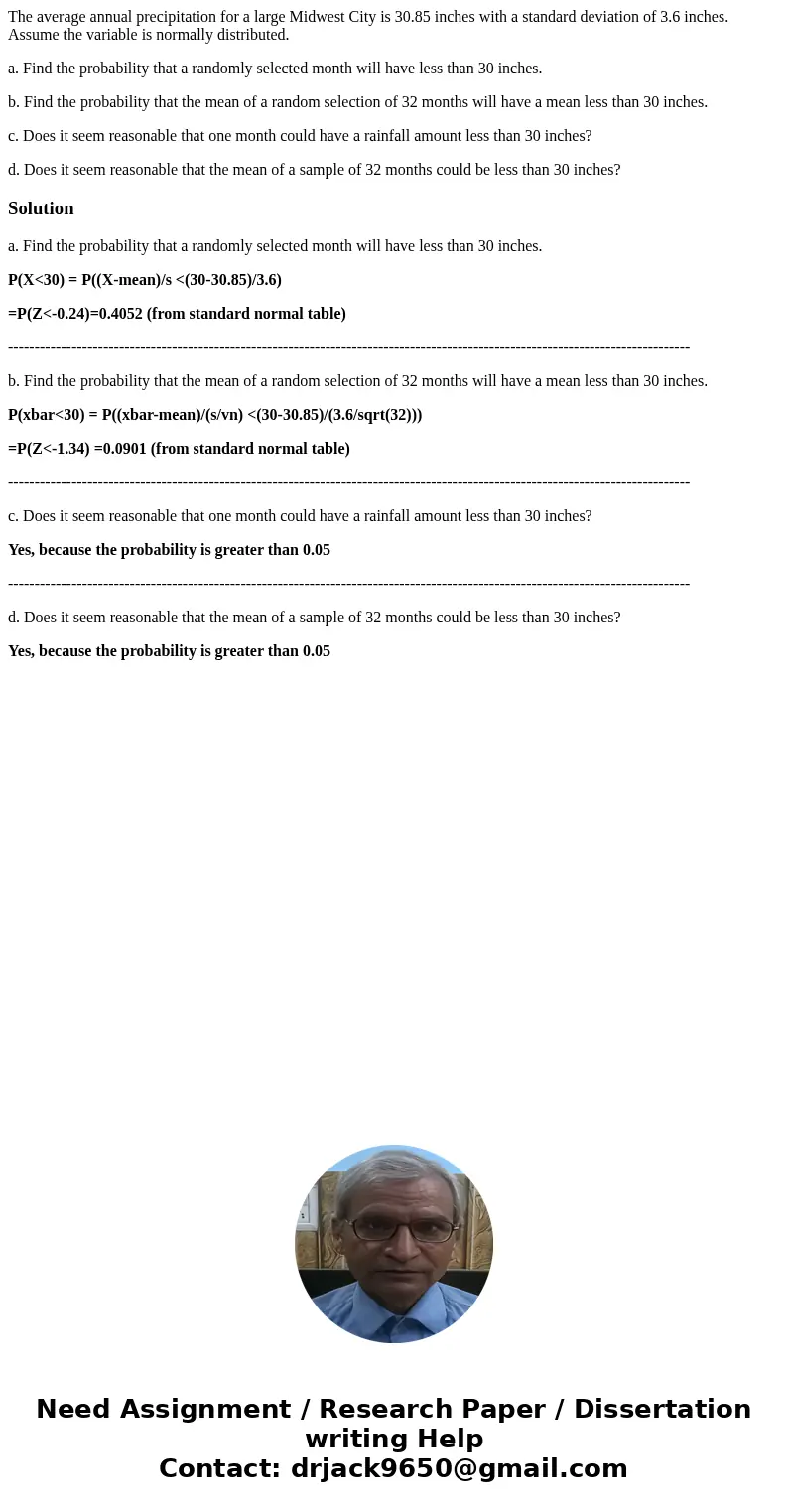The average annual precipitation for a large Midwest City is
The average annual precipitation for a large Midwest City is 30.85 inches with a standard deviation of 3.6 inches. Assume the variable is normally distributed.
a. Find the probability that a randomly selected month will have less than 30 inches.
b. Find the probability that the mean of a random selection of 32 months will have a mean less than 30 inches.
c. Does it seem reasonable that one month could have a rainfall amount less than 30 inches?
d. Does it seem reasonable that the mean of a sample of 32 months could be less than 30 inches?
Solution
a. Find the probability that a randomly selected month will have less than 30 inches.
P(X<30) = P((X-mean)/s <(30-30.85)/3.6)
=P(Z<-0.24)=0.4052 (from standard normal table)
---------------------------------------------------------------------------------------------------------------------------------
b. Find the probability that the mean of a random selection of 32 months will have a mean less than 30 inches.
P(xbar<30) = P((xbar-mean)/(s/vn) <(30-30.85)/(3.6/sqrt(32)))
=P(Z<-1.34) =0.0901 (from standard normal table)
---------------------------------------------------------------------------------------------------------------------------------
c. Does it seem reasonable that one month could have a rainfall amount less than 30 inches?
Yes, because the probability is greater than 0.05
---------------------------------------------------------------------------------------------------------------------------------
d. Does it seem reasonable that the mean of a sample of 32 months could be less than 30 inches?
Yes, because the probability is greater than 0.05

 Homework Sourse
Homework Sourse